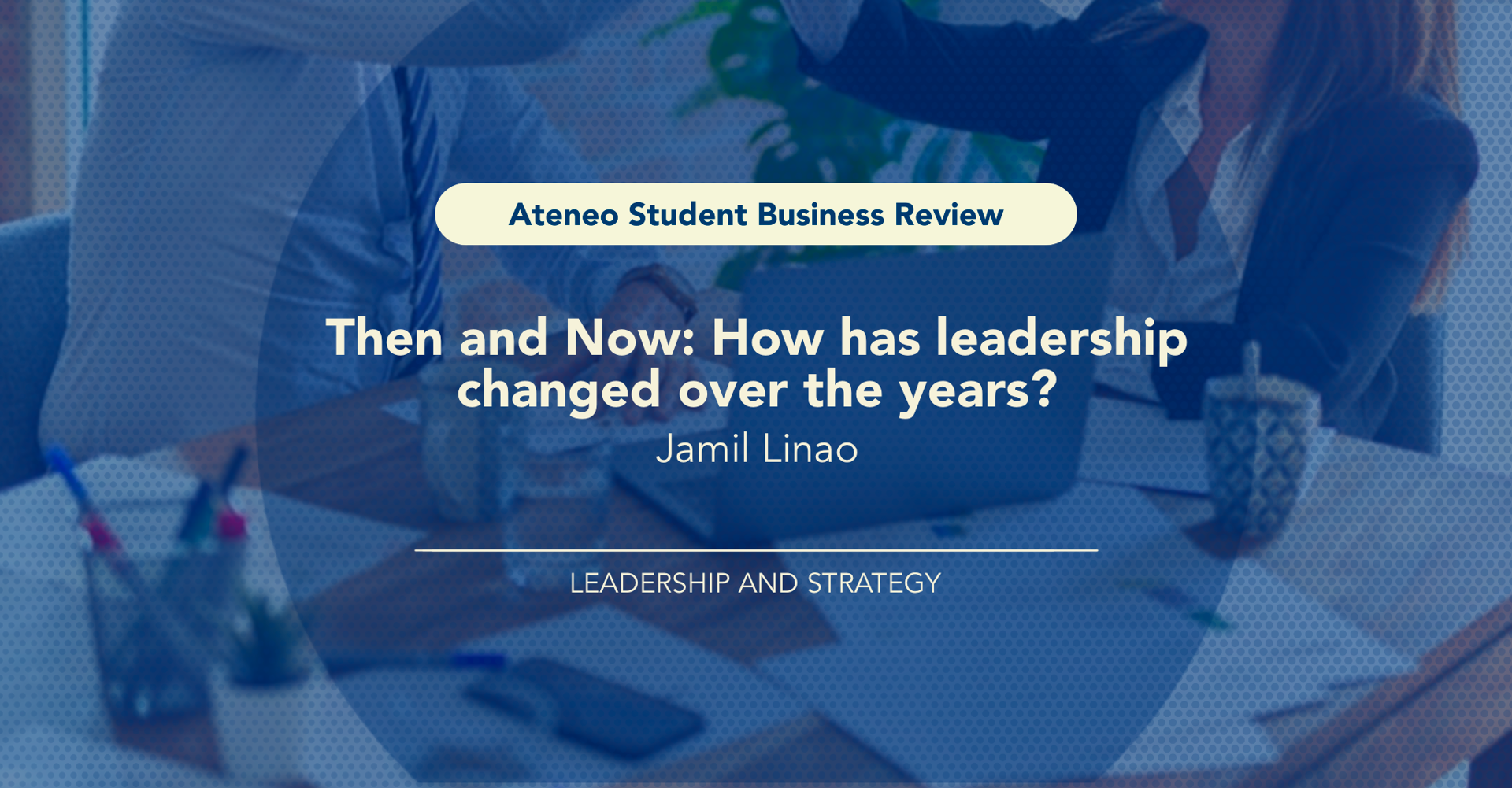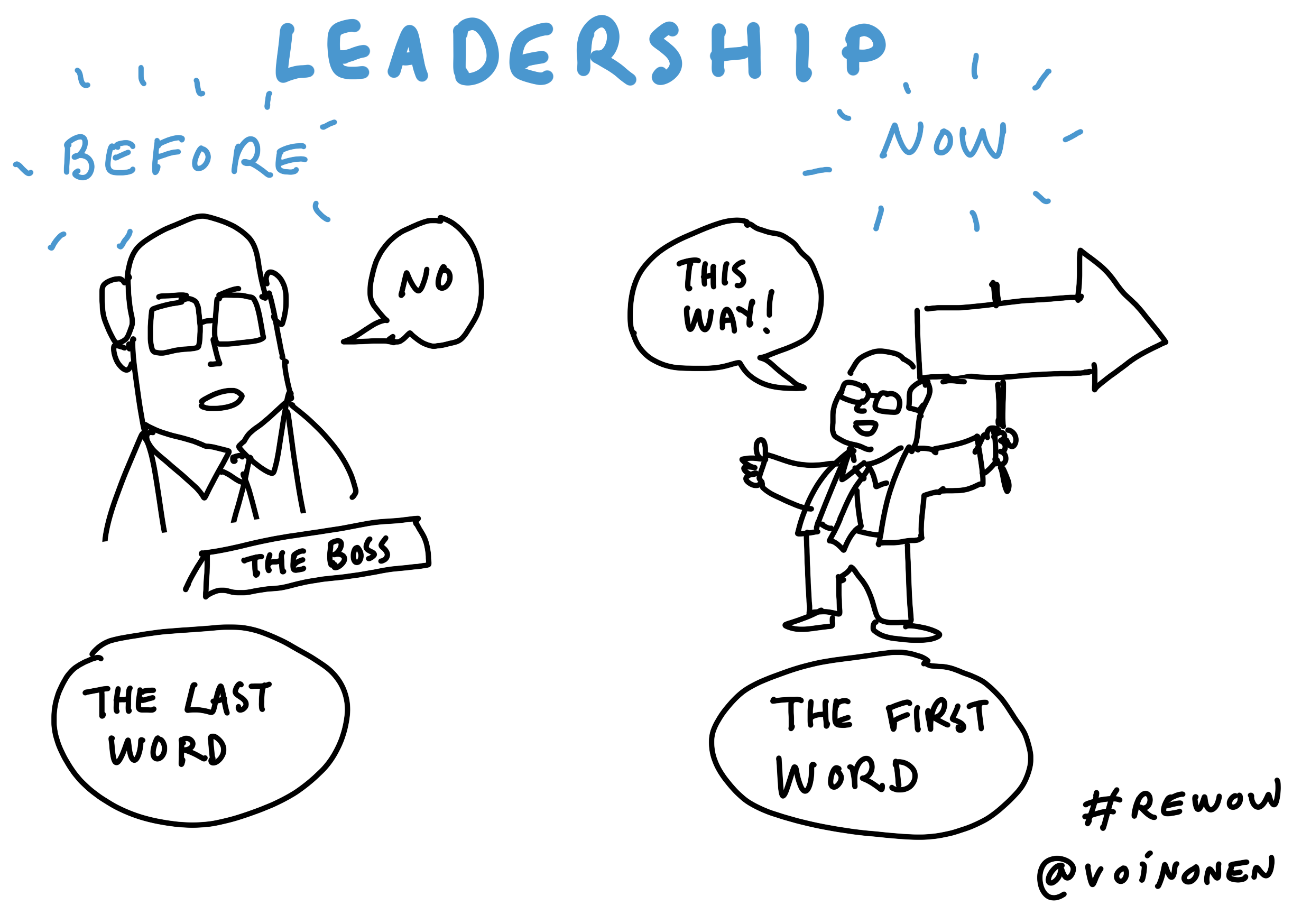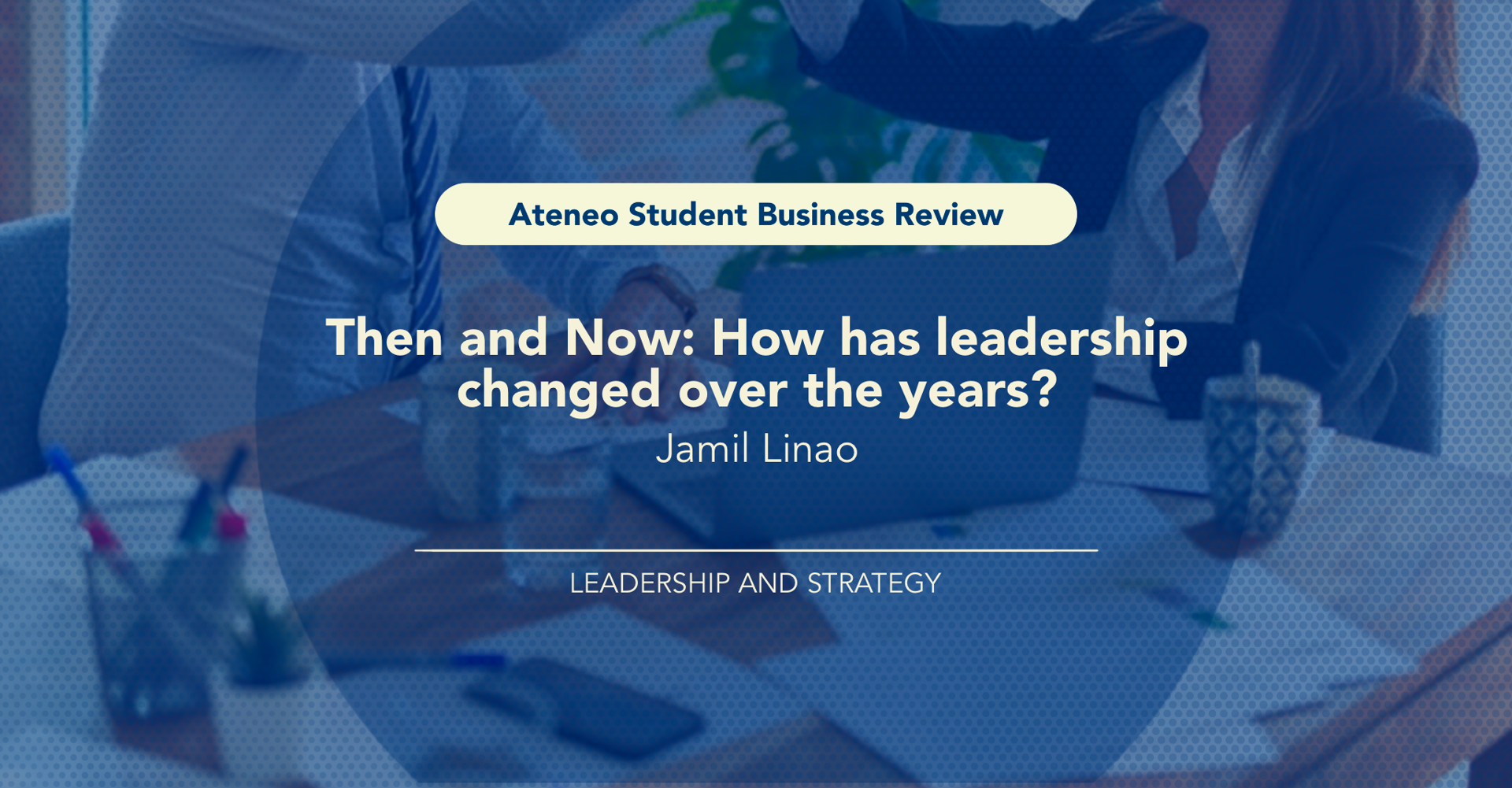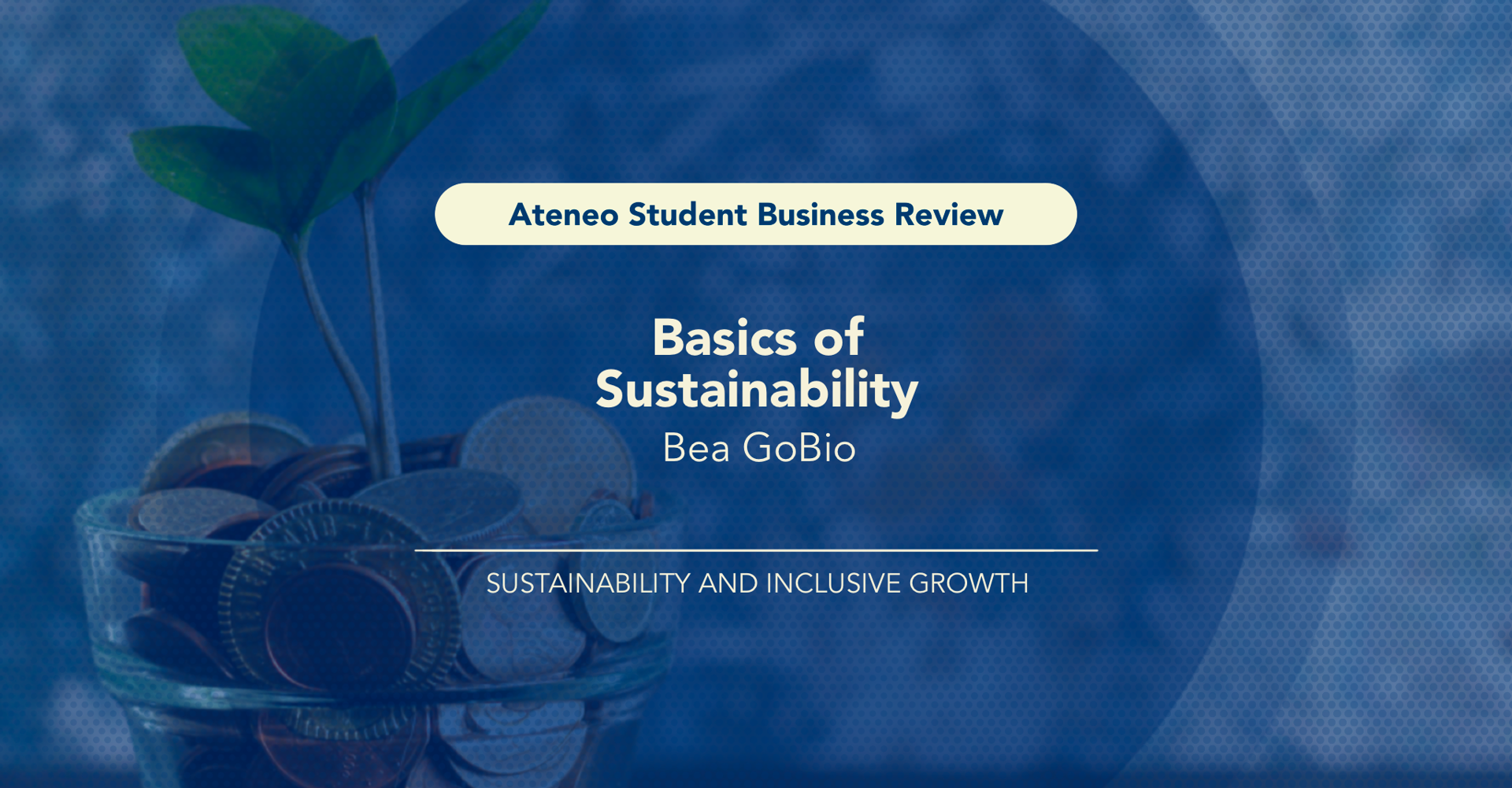Every introductory management course will start with a comparison between a manager and a leader. What does a manager do that a leader doesn't? What does a leader do that a manager doesn't? Some conventional professors say that the key differences between the two are empathy and people skills. They assert that the leader is a better “people person” than the manager, often citing John Maxwell's "A manager will say 'Go!' A leader will say 'Let's go!'"
However, considering how flexible and versatile corporate leaders are today, is the line between the manager and the leader still as foregrounded as John Maxwell claimed?
Leaders then
In a Forbes article, Holly Green and Kristi Hedges argue that the job of a corporate leader decades back was so much more straightforward than how leaders today have it. "People [before] not only don't want to be managed, in most cases, they simply won't be managed. Today's employees want to be led," they juxtaposed. These two sentences alone speak volumes about how enterprises before looked like—how leaders led, how employees performed their assignments, and how people viewed leadership.
It seems as though leading back then was simply giving commands then expecting results. Leadership before was one-dimensional: simply assigning a project to an employee without seeking the employee's input on strategy and approach.
In an Ivey Business Journal article, Carol Stephenson writes, "The hierarchical, command and control structures of the past are gone. The days of simply telling someone to do something are gone." Similarly, Emily Marsh describes leadership in the year 2000 as "autocratic and task-oriented." This implies that a few decades back, an employee's input on strategy and performance was not valued respectively. As long as an employee gets tasks done, without regard for the tangible and intangible values they bring into the organization, they will get paid. "Autocratic leadership was often the norm. Managers made all the decisions, with little input from employees. They had full control, giving people clear direction on what they needed to do, when to do it, and how to do it. The focus was on hard skills and getting tasks done," Marsh remarks on the leadership picture in 2000.
Stephenson also narrates that before, if an employee excelled in finance, "her chances of making it to the top were better than her colleagues in other departments." They did not have to understand marketing, talk to customers, or worry about another industry's news and current affairs. Their path was linear and limited
The seemingly common denominator among leaders from past decades was they all followed protocol. They were not rule-breakers. Everything was done by the book. Rarely did any leader ever deviate from the status quo and think, "Maybe we can look at this problem from this perspective," or "Is it possible we approach this case differently?"
Leaders now
Today, however, employees are more empowered to opine on ways they think the organization can better serve its employees, customers, and shareholders. Likewise, they also seek to create a lasting value outside of the organization, through initiatives in sustainability, corporate social responsibility, and empowerment of minorities among others. In the contemporary business world, most employees deem it a duty to contribute and make a difference outside of the firm they are working for. A cartoon by business storyteller Virpi Oinonen draws insights on the contrast of leadership then and now. In the cartoon, Oinonen, implies that bosses before almost always accentuated their position in the hierarchy. On the other hand, leaders today are more concerned with empowering their employees by action and example—by having the first word rather than the last.
Employees today do not only seek employers who pay well but also leaders who help them grow and develop in their crafts. In a survey conducted by Clutch Senior Writer and Marketer Michelle Delgado, she found that nearly one out of five job seekers prioritize professional development and growth opportunities when searching for jobs. Mentorship, in particular, is a heavy favorite for employees who prioritize long-term advancement. Rich Franklin from KBC Staffing says, "Mentorships are taking on a more important role. People understand that putting somebody in a new job and having them figure stuff out on their own is not great for an employee."
Sara Canaday's article also makes a point about how chaos is more encouraged in today's workplaces. She says that among today's leadership imperatives is to "allow for disruption" and "shake it up." This, according to her, encourages creativity and questions and ultimately triggers positive change. "Accept that some mistakes may happen on the way to a real breakthrough. Provide options for people to work when and where they are most productive," she writes. Leaders today are warranted to be highly observant and flexible. They ought to broaden their perspectives by considering the most outcast and wildest ideas from their people. They should be "open to receiving information from conflicting sources, and can distill complexity." Communication and listening are also soft skills leaders today are necessitated to develop. Unlike leaders from three decades back, today's leaders should be specific, direct, and candid with others. They have to hear what others have to say rather than simply planning their next response.
The Intersection
Emily Marsh argues that an effective leader's fundamental qualities and responsibilities have not really changed through the years. They are still the alphas of the firm who are responsible for inducing ideas on strategy and overall organizational performance. "We still need leaders who have a clear vision, who can communicate that vision in an inspiring and memorable way, who work hard and are committed to the goals of the organization. We still need leaders who act with integrity, honesty, and transparency. It's just the commercial environment has changed so radically that we've had to adapt how we lead in order to keep pace," she writes.
One intersection between effective leaders then and our influential leaders today is the ability to perceive abrupt changes and react to them as prudent as possible. In other words, the ability to innovate according to the demands of the customers. The perfect example of this is the infamous Kodak downfall at a time when a significant shift in photo documenting was about to take place. Kodak was dominating the photographic film market. When an opportunity to build a digital camera was presented to Kodak, they declined it. Today, Kodak's main source of revenues has shifted to supplying photo papers.
The Kodak story is a classic example of the importance of surrounding a firm’s need for leaders who enkindle positive change and innovation.
Moving Forward
The leadership culture of chasing profits at the expense of ethics and the health of their people seems to be a norm of the past, with more and more companies adopting "People first” policies.
In a speech at the 2014 Nordic Business Forum, AirAsia CEO Tony Fernandes talks about "bottom-up" leadership. In the speech, Fernandes shared how his baggage staff suggested that they buy belt loaders to help in transferring bags. Fernandes initially said, "No, we can't afford it." Fernandes pivoted after personally experiencing the assignment of a baggage staffer. AirAsia went on to buy the belt loaders as suggested by the staff.
The case of AirAsia is just one of many that illustrates how business leadership has come a long way from the autocratic boss of yesteryears.
More Articles
Then and Now: How has leadership changed over the years?
by Jamil Linao | December 6, 2021
Today’s leaders are trained not only to manage their subordinates but also to help them grow and develop. This was not the case twenty years back.
Cloud Storage: The Basics
by Raphael Llagas | December 6, 2021
An overview of the advantages and disadvantages of cloud storage, the types of cloud storage, and services integrated with everyday life.
Sustainability and Inclusive Growth
Basics of Sustainability
by Bea GoBio | March 7, 2022
How often have you heard the word “sustainability” and immediately associated it with just the environment? You may be surprised to know that there are more aspects of sustainability than simply environmental sustainability.
Copyright © 2021 ASBR JGSOM | All rights reserved.




